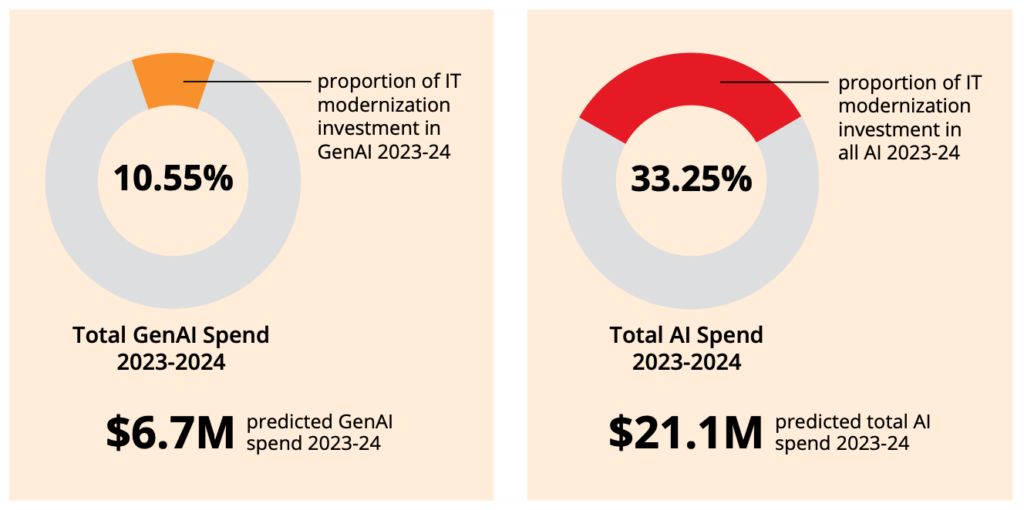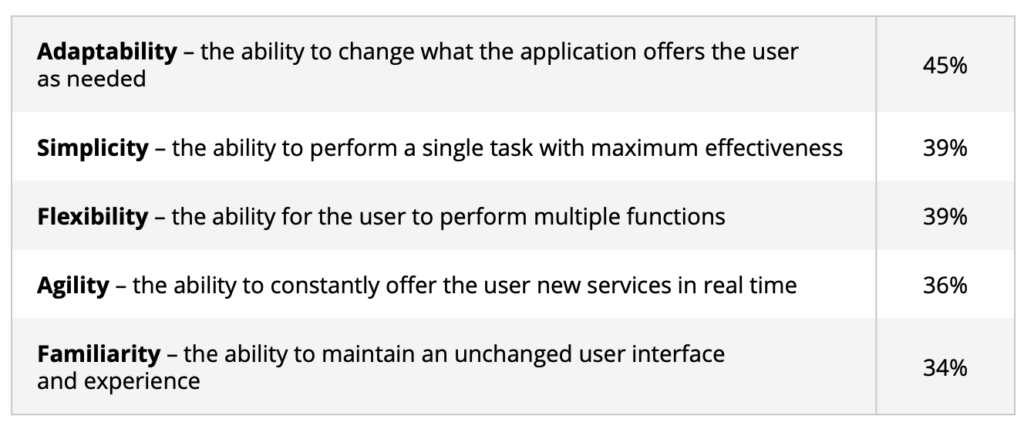The rise of generative AI (GenAI) is proving transformative for organizations. But organizations must be ready to seize the AI opportunity. Couchbase’s seventh annual survey of 500 IT decision makers explores how enterprises are reacting to the rapid growth of AI and assesses the preparedness of their data strategies.
Digitization pulse check
The view from IT departments is clear: digital modernization across organizations is still a key priority and is increasingly fueled by AI. A 27% rise is predicted in investment across digital modernization, reaching $35.5 million per enterprise by the end of 2024.
However, challenges remain. Every enterprise surveyed has been prevented from pursuing a new digital service or IT modernization project due to issues with technology, resources or organizational buy-in. Equally, every enterprise has experienced a failed project. On average, delayed or failed projects cost $4 million.
According to the data, the key barriers preventing new and current digital projects from being successful are legacy technology challenges and a risk of failure. What’s also clear is the impact that project delays can have on enterprises, as they struggle to remain efficient and competitive. This is at odds with the ongoing productivity push – 72% believe their departments are under pressure to do more with less.
The oncoming AI rush
AI’s ability to support intelligent and efficient automation is a major bonus for enterprises looking to improve productivity. But AI’s potential stretches further than this, with testing of new ideas, helping employees to be more efficient and combatting security threats as the key reasons highlighted by respondents for AI spending.
Investment is significant too – respondents predict a total AI spend this year of over $21 million per enterprise.
Alongside steady AI investment over the next 12 months, enterprises plan to allocate budget to areas that will be crucial to supporting further AI growth – such as edge computing, IT infrastructure and data management.
Time to prepare
Enterprises require more than budget commitments to make good on AI investment. Respondents are clear on the need to ensure all areas of the business can use AI safely and effectively.
Nearly two-thirds (64%) of IT leaders believe that other companies have rushed to adopt the technology without properly understanding how to use AI safely. The risk of a rushed approach puts non-specialist users on the front line with the technology, which could result in financial, reputational or legal issues if the AI shares private information, or hallucinates a response. Even experienced AI users on development teams encounter such challenges.
The right data strategy and architecture will be crucial to powering AI. In fact, 59% said they are currently worried their ability to manage data will not meet the demands of AI without extra investment. These concerns extend to the compute power available to enterprises.
To mitigate these concerns, 73% of enterprises are increasing investment in AI tools to help developers work more effectively and create new GenAI applications faster. 66% of enterprises want to update their databases to better support in-house GenAI applications but believe they would need to invest in multiple databases to get all necessary capabilities. Multipurpose databases that support all access needs are available, but educating and building awareness with developers is necessary.
Without complete control over where data is stored, how it’s used and who has access, GenAI will not be safe to use. Furthermore, without the ability to access, share and use data with minimal latency, it’ll be impossible for enterprises to meet GenAI’s performance demands. The research shows that at least 54% of enterprises cannot ensure a comprehensive data strategy that is built for GenAI because they do not have all the elements needed.
Adaptive applications
With user expectations rising for personalized, intuitive journeys, 61% state they are under pressure to continually deliver improved experiences for end-users.
IT leaders state the most important attribute for a consumer-facing application is adaptability (45%). Adaptive applications can automatically alter what the user is offered as needed, delivering a tailored experience.
The time for AI action is now
Organizations that can modernize their data management strategies and control the high-speed data analytics that AI demands will find themselves in an ideal position to make full use of GenAI and deliver AI-powered adaptive applications that users crave.
A modern database platform, such as Couchbase, is central to achieving this. Couchbase’s support for multiple data access patterns, including vector search, can help remove complexity within the data architecture. This improves accuracy in prompts for GenAI conversations. Couchbase delivers these capabilities at the edge and in mobile devices. Devices, after all, contain a wealth of real-time situational data that can improve context for AI-powered personalized experiences.
The platform’s high-performance caching delivers responsiveness at scale, helping many Couchbase users eliminate latency and create the next generation of AI-powered applications. Couchbase can be spun up rapidly, significantly enhancing developer productivity and accelerating time to market for modern applications. That’s why developers love Couchbase!
Access the full report: Digital Modernization in 2025 – Are data strategies ready for the AI age?
And see here for more information on how Couchbase is the perfect fit to enable AI-powered adaptive applications.
Check out how customers, including Carnival Corporation, Betfair and United Airlines are using Couchbase to modernize applications.


